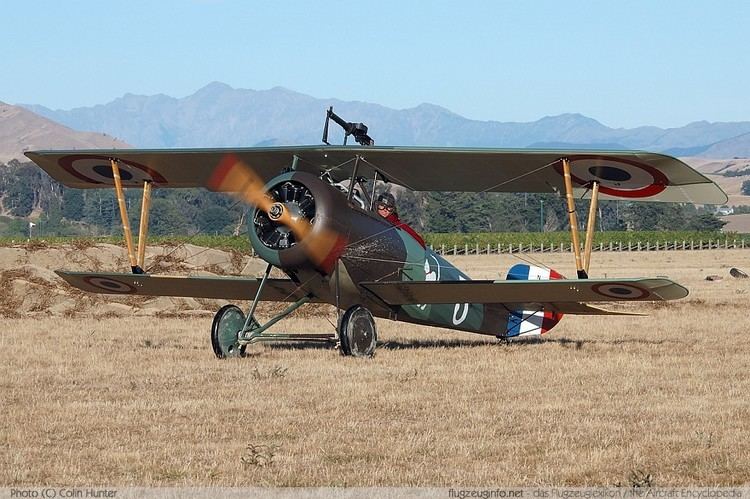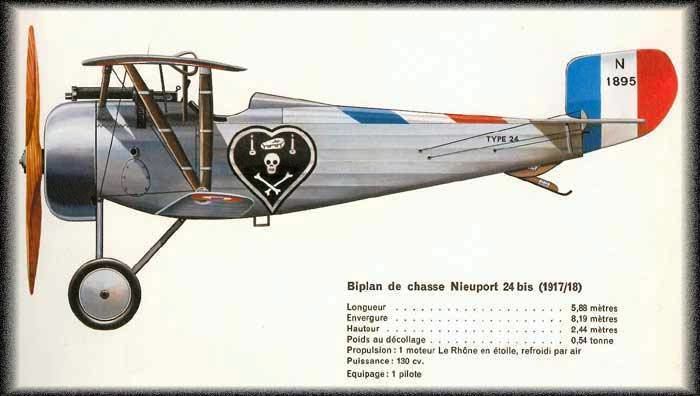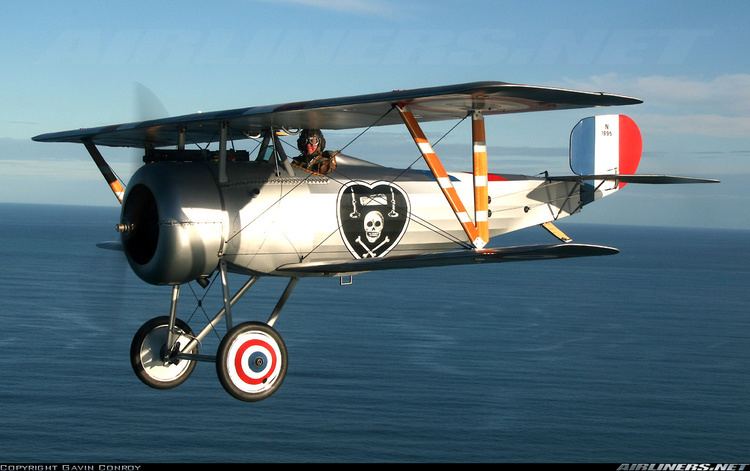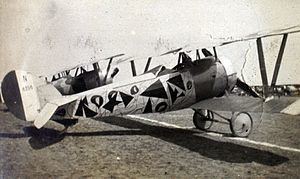Top speed 187 km/h Wingspan 8.18 m Weight 354 kg Engine type Rotary engine | Range 249 km Length 5.88 m First flight 1917 | |
 | ||
Nieuport 24 homebuild big scale biplane
The Nieuport 24 was a French sesquiplane fighter aircraft during World War I designed by Gustave Delage as a replacement for the successful Nieuport 17. In the event its performance was little better than the type it was meant to replace, which was largely superseded by the SPAD S.7 instead. Operational Nieuport 24s served with French, British and Russian units, and the type also served widely as an advanced trainer.
Contents
- Nieuport 24 homebuild big scale biplane
- One third scale nieuport 24 bis
- Design and development
- Service history
- Variants
- Operators
- Specifications Nieuport 24bis
- References
One third scale nieuport 24 bis
Design and development

The Nieuport 24 introduced a new fuselage of improved aerodynamic form, rounded wingtips, and a tail unit incorporating a small fixed fin and a curved rudder. The tailskid was sprung internally and had a neater appearance than that on earlier Nieuports. A 130 hp Le Rhône rotary engine was fitted.

There were initial structural problems with the new tail, and most production aircraft of the type were of the Nieuport 24bis model, which retained the fuselage and wings of the 24, but reverted to the Nieuport 17 type tailplane, tailskid and rectangular balanced rudder. The new tail was finally standardised on the Nieuport 27.
A batch of Nieuport 24bis were built in England for the Royal Naval Air Service.

The standard armament of the Nieuport 17 (a synchronised Vickers in French service - a Lewis gun on a Foster mounting on the top wing in British service) was retained to save weight and retain a good performance, although many 24s were used as advanced trainers and normally flown without guns.
Service history

In the summer of 1917, when the Nieuport 24 and 24bis. were coming off the production line, most French fighter squadrons were replacing their Nieuport 17s with SPAD S.VIIs – and many of the new fighters went to fighter training schools, and to France’s allies, including the Russians, and the British, who used theirs well into 1918, due to a shortage of S.E.5as. A few French units retained the Nieuport through late 1917 – the type was actually preferred by some pilots, especially the famous Charles Nungesser.
Some of the large number of Nieuport advanced trainers bought by the Americans for their flying schools in France in November 1917 were 24s or 24bis.
Variants
Operators
Specifications (Nieuport 24bis.)
Data from
General characteristics
Performance
Armament
